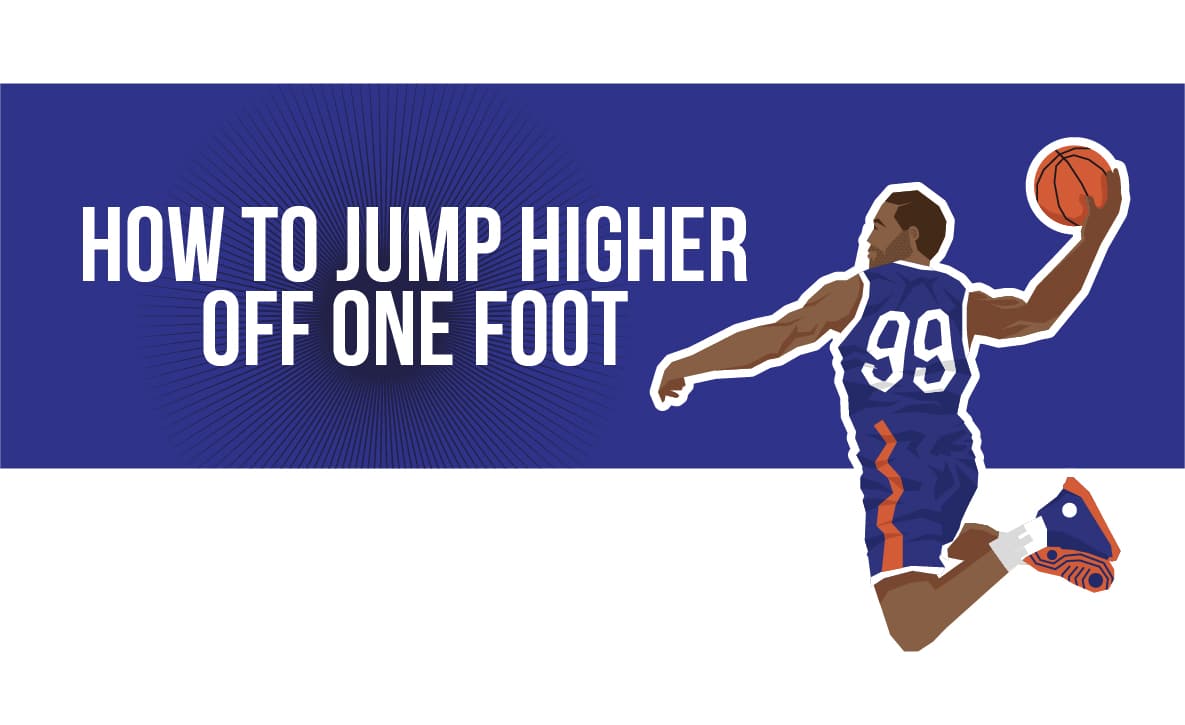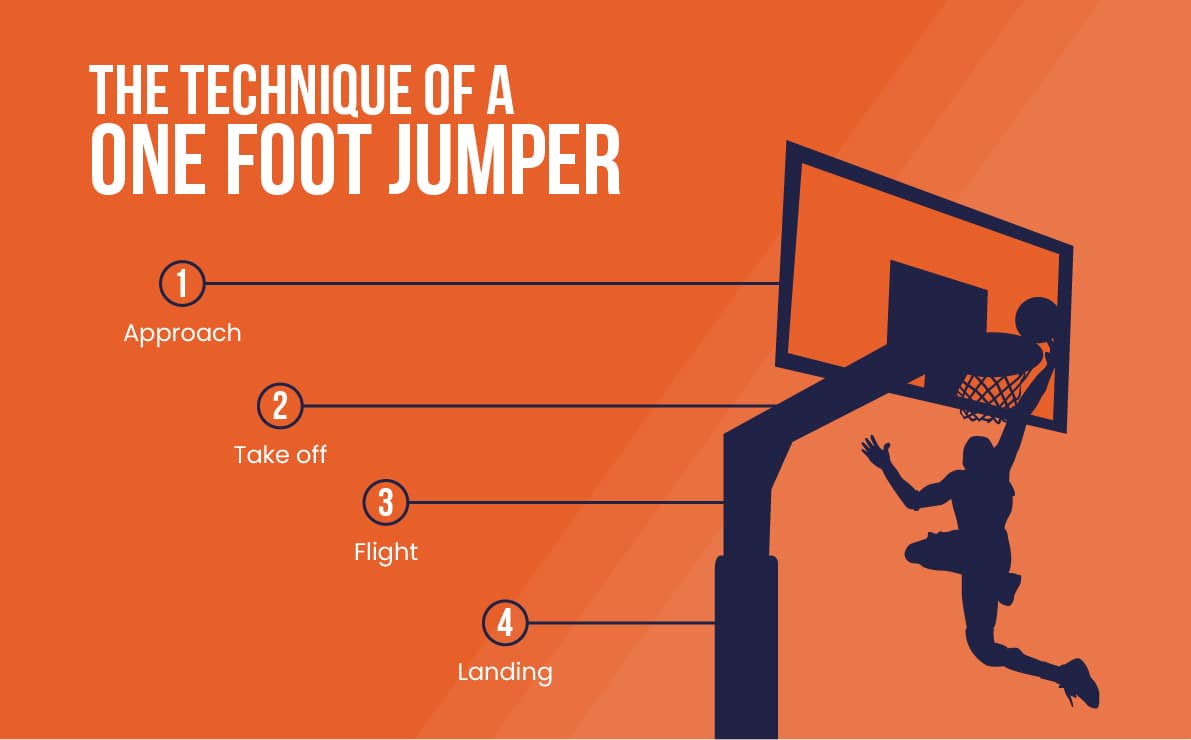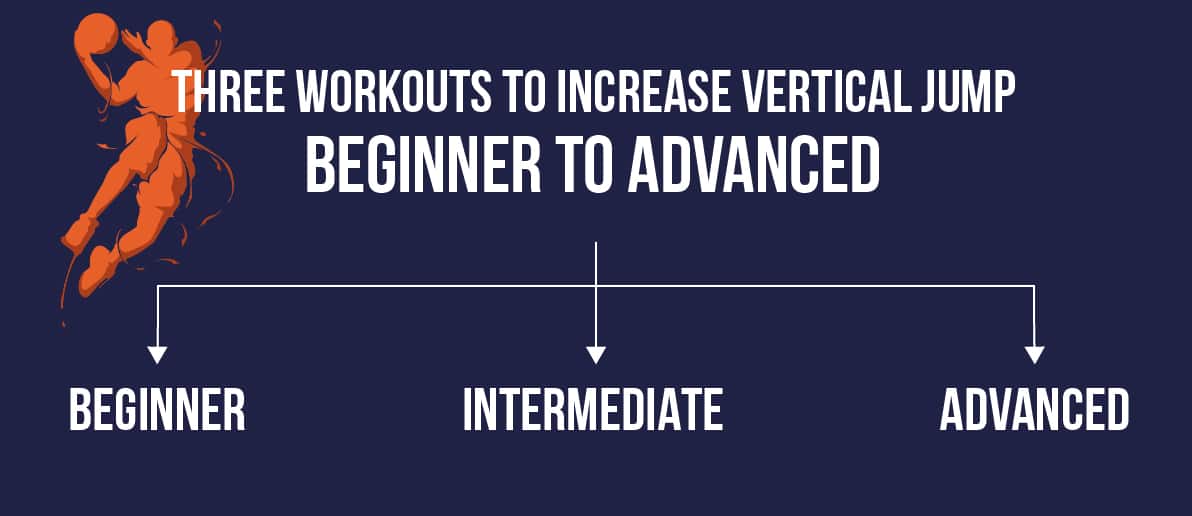
The one certainty about jumping higher off one foot is that you will effectively have to realize this goal with fewer tools at your disposal.
The primary consideration before jumping higher off one foot needs to be how you plan to compensate for the reduced storage and release of explosive power when you jump. That would ordinarily not have been a problem when jumping off two feet.
If you are somebody planning to jump higher off one foot, your jump training needs to focus most of the attention on increasing strength and capacity in the lower limbs.
Many of the exercises we have listed in this blog are plyometric in nature, which means they are the best way to increase force in the lower limbs in a remarkably short space of time.
As you will see throughout these pages, plyometrics are at the core of most jump training programs.
Are You A One-Foot Jumper Or Two Feet Jumper?
If you harbour any aspirations of competing in the following codes, you will need to harness your capacity to jump higher off one foot instead of two feet: high jump, american football, aussie rules football, badminton, tennis, basketball.
Any sportsman jumping off one foot or leg has the benefit of having one leg free at the point of take off. Not only is that leg free but it is also elevated at the time of take-off. That elevated, swinging leg helps build up some meaningful momentum when you are airborne.
The sports we listed above, where jumping off one leg is suggested, have greater height demands and not so much emphasis is placed on stability in the air.
The Mechanics Of A One-Foot Jumping Technique

1- Approach
The most important consideration during the approach of a jump off one foot is velocity.
2- Take-Off
When taking off for your jump, with one leg, it only ever makes sense to launch off your dominant leg..
3- Flight
You will achieve far better hang time and flight results when jumping off one leg. Jumping off from one foot provides you with that additional capacity to make up for any height deficit when trying To Jump Higher.
However, that free leg can also prove to be somewhat of an impediment to some who try to Jump Higher Off One Foot. Instead of helping to propel you upwards, it can actually weigh down on you.
4- Landing
Even when athletes take off from one foot, they are still expected and most likely to land on two feet. Landing with one foot carries with it significant risks of injury.
It is also worth remembering that when you take off from one foot, you do compromise on control for the sake of things like agility and height. How much control you have while returning from flight will determine if the risk was worth it or not.
The Best 12 Powerful Exercises To Jump Higher Off One Foot

Beginner Workouts
1-
Drill Name: Sprint Training
Drill Goal:
If you harbour any aspirations of being an agile jumper, you will need to burn the fat on your body at a rate of knots. The Jump Rope is one way of realising that objective. The other option is to conduct some intense sprint training.
Building up speed matters, when you harbour aspirations of trying to increase the quality of your jump. We cover that in greater detail throughout these pages. As this drill’s name would probably suggest, sprinting seems to be an outstanding way to build up that speed.
Drill Direction:
We have dealt with this in a previous blog but the underlying principle here is that you should never do sprint training at full intensity because you are never actually going to build up speed that way.
The focus with this training should rather centre around doing reps over 50 yards and at about 60 percent of the intensity. After “sprinting”, you will then backtrack towards your point of departure.
Then you can take it up a notch and do the same reps but over a distance of about 100 yards - in an attempt to build up your speed endurance.
These sprint exercises can be executed over a flat running surface, which is where we suggest you should start.
For the sake of variety you can then shift to doing similar sprint training on a sharp incline - which will teach your body to generate the explosive power that it needs, when preparing to complete a vertical jump.
2-
Drill Name: Vertical Frog Jump
Drill Goal:
Gives you a solid workout for your outer thighs, groin and quads.
Drill Direction:
Start in an upright position with your feet slightly apart.
Rise up a little on your toes.
Press downwards until your body is in a squatting position.
Touch the ground with your fingers and then spring into the air.
Use your arms to help propel you into the air. Once you have landed, one rep would have been completed.
3-
Drill Name: Altitude Drop
Drill Goal:
We know just how long you have been waiting for a Plyometrics exercise. We always give the people what they want because they will love us for it.
When jumping in any sport, you need to be fast and you need to be strong.
Not every exercise in the manual knocks both of those birds over with one stone. Plyometrics exercises always do. If you are desperate to jump higher off one foot, then this would be a good place to start.
Drill Direction:
Step up onto your elevated surface and take off from one leg.
Instead of just stepping down, push yourself upwards before landing. You can either choose to land on one foot or two. We would suggest two, to absorb the shock that comes with the intensity when you land.
4-
Drill Name: Drop Sets
Drill Goal:
The purpose of this drill is to increase your muscle mass and more critically perhaps, increase the strength of your muscles. Muscle strength matters when trying to jump higher off one foot - more so than when you are jumping off two feet.
You are also going to shed some fat after performing this routine, which is always useful when you are trying to be more agile on the sports field or court. Agile athletes will always jump better off one foot.
Drill Direction:
The key component here is that after the completion of a certain number or reps, you will drop the weight at the beginning of a new set.
You then drop or reduce the weights until you reach a point when you can no longer lift.
Intermediate Workouts
5-
Drill Name: Bent Over Row
Drill Goal:
The primary objective of this drill is to increase the strength of your body’s core. The improvement of muscle tone will be a byproduct of that but the core goal is to increase your strength levels.
When we talk about the core, everybody immediately assumes that we are just talking about the abs. However, with this routine, there is also tremendous emphasis on strengthening your back muscles, which is just as important when Exercising To Jump Higher.
Drill Direction:
While this will feel a little different, depending on the variation that you adopt with this drill, you should ordinarily be pulling the relevant weights up to your rib cage. Don’t do this drill too fast, as slow and steady always wins this race.
Once you have pulled the weights up towards the rib cage, you will then release them until you are in your starting position again. That would constitute one rep of the drill.
6-
Drill Name: Hurdle Hopping With One Leg
Drill Goal:
Oh look, another plyometric drill that will help you jump higher off one leg!
More specifically, the Hurdle Hop will help you increase your reaction speed and power.
Your ankles, which take a particular pounding when either taking off or landing on one leg, will become stronger once you have completed a series of ankle hop exercises.
A major fear for those who do try and jump off one leg is that they might not be able to coordinate their jumps as well as those who jump off two feet. Completing a series of Hurdle Hops will help you coordinate your body a lot better.
Drill Direction:
When you have your set of about 12 hurdles, you should place them about four feet apart, to help get the most out of your exercise routine.
It is important to tense up those calf muscles before you land in what should be an athletic position. That is to say, your knees should flex and so should your hips.
7-
Drill Name: Lunge Hops
Drill Goal:
Works outer thighs, hamstrings, calves and quads.
Drill Direction:
Lunge forward with your left leg, into a squatting position and then straighten your body up again. Then alternate unto your right leg.
8-
Drill Name: Pogo Jumps
Drill Goal:
As a primary function, Pogo Jumps provide a workout for the calves. As a secondary function, this is a workout for the hamstrings and quads.
Drill Direction:
Balance on one leg, before leaping as high as possible into the air, repetitively. When you jump, do so without bending or flexing your knee too much. The less you flex the knee, the better.
Advanced Workout
9-
Drill Name: Mountain Climbers
Drill Goal:
When you execute a series of Mountain Climbers, the parts of your body that will benefit the most are the arms, shoulders, quadriceps and your core muscles. As people who are trying to jump higher, we are particularly interested in what this exercise can do for the strengthening of the core.
Agility is also something that features prominently in discussions by people who want to increase the quality of their jump. Agility is also a strong element of this drill, which really does give the whole body a working over.
Drill Direction:
Instead of doing push-ups (or planks), the emphasis with this workout is actually on the movement of both legs. Without compromising your plank position, you should then try and bring one of your knees up to your chest.
You will then drag that leg back into its original position and drag the other knee up to your chest. Once that has been achieved, you then drag that knee back into its original position.
Every time you alternate your knees will constitute a rep.
10-
Drill Name: Renegade Rowing
Drill Goal:
Works the core muscles. Builds body strength.
Drill Direction:
Keeping one arm fixed in the plank position, you will then pull the one weight up towards your waist.
Bring that arm (and weight down) before alternating with your other arm. Once both sides have been done, that would constitute a rep.
11-
Drill Name: Rear Foot Elevated Foot Squat
Drill Goal:
Building core and lower body strength. Does particular work on the glutes and the quads.
Drill Direction:
Your less dominant foot should be placed on the bench, while your more dominant foot will be grounded.
Subsequent to that, you should then lower your hips until your back knee is almost touching the ground.
Then lift yourself back up again from that position.
12-
Drill Name: Box Jump (One Leg)
Drill Goal:
All Box Jumps are performed to increase explosive power in the legs. Even more so, when you are performing them with one leg. An underrated quality of Box Jumps is how quickly they can burn calories too.
Drill Direction:
Place a box slightly in front of you, before performing a squat with just the one leg and then exploding onto the box. While you take off from one leg, you should land on the box with two feet, for safety.
Conclusion
The biggest fears for anybody planning - or forced - to jump off one foot are associated with core stability, control and strength. All of the exercises that we have listed above deal more than adequately with all three facets of the jump off one leg.
An aspect some people take for granted when jumping off one foot is that the strength of the upper limbs is just as important as the strength in the lower limbs. Strong arms can help extend your reach and give you those extra centimetres when jumping off one foot.
Strong arms are also an important balancing component, when trying to make your body as agile as possible - either during take off or during flight. The point we are trying to make here is that the weight lifting and arm exercises matter just as much as the training routines that are geared towards developing your leg muscles.
Hey, I’m Aleksandar and I am a Basketball freak! That is why I decided to create this blog. Teaching people How to dunk a basketball and How to Jump Higher in this sport or other related sports that require vertical jumping, is my specialty. If that’s your aim, then you have come to the right place.
